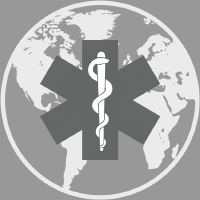Topic Editors


Economics of Public Health: Assessment of Health Interventions
Topic Information
Dear Colleagues,
Health interventions such as health policies and educational programs are powerful tools to improve public health by reducing health-compromising behaviors such as smoking (vaping among populations who would otherwise not use any nicotine or tobacco products), binge drinking, recreational cannabis use, and physical inactivity. However, there are evidence gaps on how best to design and implement health interventions. For emerging products that could benefit certain populations but pose threats to others, such as electronic cigarettes and cannabis, there is not sufficient evidence on how best to design interventions that balance the intended and unintended behavioral consequences. For policies that are known to effectively reduce health-compromising behaviors (e.g., tobacco and alcohol taxes, cessation services), implementation barriers remain, and innovative approaches are needed for different contexts. We believe that interdisciplinary research that connects or integrates intervention assessment, economic analysis, implementation sciences, and public health could address some of the important gaps, advance the field, and design interventions that are effective and cost-effective. Therefore, this Topic encourages submissions in the following key areas:
- Studies on interventions targeting emerging substances;
- Studies on implementing interventions in low-resource settings (e.g., low- and middle- income countries);
- Studies on assessing the costs and benefits of implementing an intervention (e.g., welfare analysis);
- Studies on evaluating intended and unintended behavioral changes due to an intervention.
Dr. Ce Shang
Dr. Amanda J. Quisenberry
Dr. Yingning Wang
Topic Editors
Keywords
- intervention
- policy
- program evaluation
- health behaviors
- economics of public health
- health economics
- substance use
- physical inactivity
- obesity
- healthy lifestyle
- cost–benefit analysis
- population health
- implementation science
- behavioral experiments
- conjoint analysis
Participating Journals
| Journal Name | Impact Factor | CiteScore | Launched Year | First Decision (median) | APC | |
|---|---|---|---|---|---|---|

Behavioral Sciences
|
2.6 | 3.0 | 2011 | 21.5 Days | CHF 2200 | Submit |

Children
|
2.4 | 2.0 | 2014 | 13.8 Days | CHF 2400 | Submit |

Healthcare
|
2.8 | 2.7 | 2013 | 19.5 Days | CHF 2700 | Submit |

International Journal of Environmental Research and Public Health
|
- | 5.4 | 2004 | 29.6 Days | CHF 2500 | Submit |

Nutrients
|
5.9 | 9.0 | 2009 | 14.5 Days | CHF 2900 | Submit |

MDPI Topics is cooperating with Preprints.org and has built a direct connection between MDPI journals and Preprints.org. Authors are encouraged to enjoy the benefits by posting a preprint at Preprints.org prior to publication:
- Immediately share your ideas ahead of publication and establish your research priority;
- Protect your idea from being stolen with this time-stamped preprint article;
- Enhance the exposure and impact of your research;
- Receive feedback from your peers in advance;
- Have it indexed in Web of Science (Preprint Citation Index), Google Scholar, Crossref, SHARE, PrePubMed, Scilit and Europe PMC.


